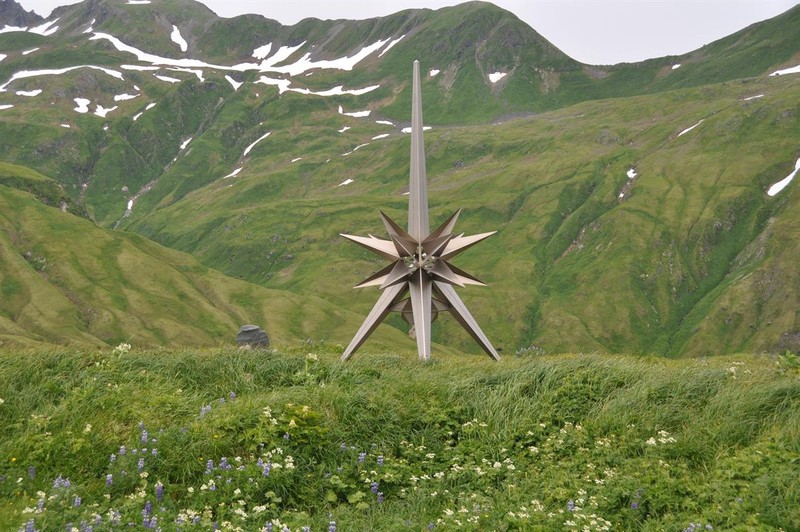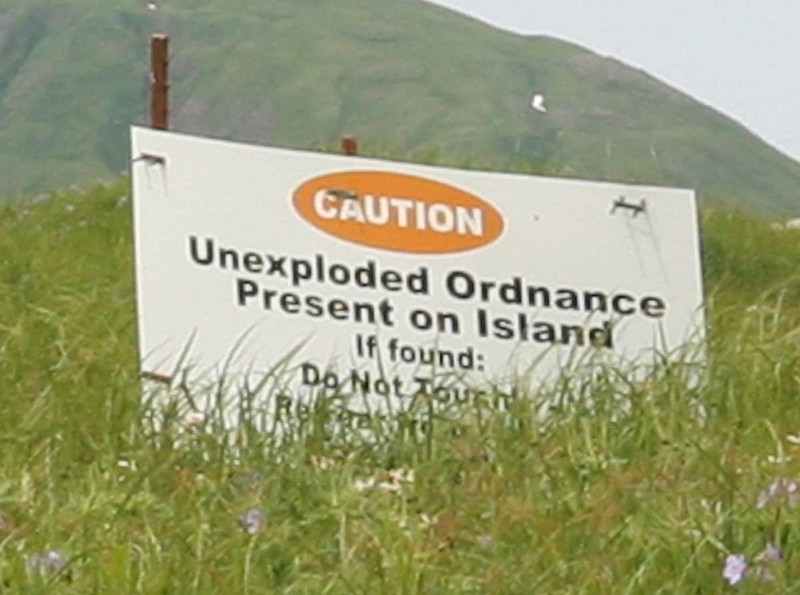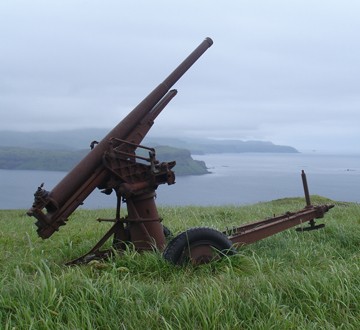Battle of Attu and Kiska
Introduction
Text-to-speech Audio
Images
The Second World War peace memorial on Attu Island

Kiska still has many left over artifacts from the Japanese occupation, just lying on the beach. Whereas, on Attu, if you didn't know what had happened there ...


The largest intact collection of Japanese artillery pieces in the world is on Kiska Island. Remnants of Japanese coastal defenses are found on the Kiska and Attu portions of the Monument.

Backstory and Context
Text-to-speech Audio
The United States did not give the Japanese garrisons on the islands of Attu and Kiska much attention in 1942. This was due primarily because its attention was focused on recovering from the Pearl Harbor attack, building up the naval powers in the south Pacific, and calling up and transporting an army to Europe. This all changed on March 26, 1943, when the United States was able to open sea lanes to the islands of Attu and Kiska with the victory in the Battle of Komandorski Islands. The United States was now able to mount an offensive to retake the islands of Attu and Kiska.
On May 11, 1943, an army infantry numbering 11,000 landed on the north and south end of Attu. The Japanese commander Colonel Yasuyo Yamasaki had moved his outnumbered force to the high ground on the island. The American force anticipated only taking a few days to reoccupy the island and at first encountered little resistance. The American force had not anticipated the rugged terrain and harsh climate of the island having a negative impact on their advancement. The American force was not prepared for the climate and terrain of the island, the force was ill-equipped and under dressed for the cold, fog, and wind. Exposure to the drenching rains and freezing cold inflicted more casualties than enemy fire as hundreds of U.S. troops suffered frostbite, trench foot and gangrene.
After several weeks, with the aid of naval and air bombardment, the army had finally taken the high ground and forced Colonel Yasuyo Yamasaki and his men to forgo a final attempt to retake the position. The remaining Japanese soldiers, most of whom adhered to the traditional Bushido code (or “way of the warrior”) forbidding surrender as the ultimate dishonor, began to face the inevitable. Before dawn on May 29, 1943, in one of the largest banzai charges (an all-out, often desperate attack) of the Pacific War, Colonel yasuyo Yamasaki and his men launched a frontal attack on the American force. Brutal hand-to-hand combat followed until Yamasaki and his men were finally routed by overwhelming firepower. Most of the Japanese who were not killed committed suicide, in many cases by detonating hand grenades near their stomachs. Afterward, 2,000 Japanese died out of the approximately 2,500 Japanese troops on Attu when the Americans landed, fewer than 30 survived to be taken prisoner. Some 1,000 U.S. troops died in the retaking of Attu.
In August of 1943 American forces retook the island of Kiska with far less resistance. The Japanese knowing that the island of Kiska would also be retaken by American force had fled the island weeks before the American forces were to arrive. The Japanese commanders had fled the island under the cover of fog without the American force even knowing they had left. The American force retook the island of Kiska without any combat involved.
Sources
http://www.history.com/topics/world-war-ii/battle-of-attu
